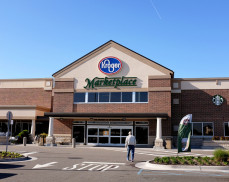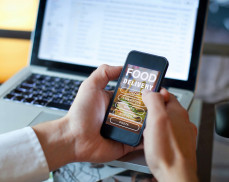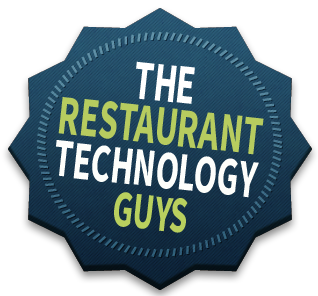
A new service from The Kroger Co. turns up the competitive heat on Amazon, Walmart and online grocery delivery providers like Instacart and Shipt.
The Cincinnati-based supermarket giant has introduced Kroger Ship, a direct-to-customer e-commerce platform that enables consumers to order from a selection of groceries at ship.kroger.com and have them delivered to their door.
Kroger is beta-launching Ship in four markets: Cincinnati; Houston; Louisville, Ky.; and Nashville, Tenn. During the initial phase of the rollout, Kroger said, customers can shop from a curated assortment of 4,500 Kroger own-brand products as well as more than 50,000 center store groceries and household essentials. The company noted that it tailored the product selection using data and insights from its 84.51° digital intelligence arm.
Home delivery via Kroger Ship, made by a package carrier, is free for orders over $35 and carries a $4.99 fee for smaller orders.
Kroger also announced an exclusive U.S. partnership with U.K.-based online supermarket Ocado. The companies plan to build three automated e-commerce warehouses this year and identify up to 20 possible sites for the facilities over the first three years of their agreement.
Why are we talking about this?
Because, Kroger, now has the ability to be a direct competitor of other restaurants. How, you may ask? Kroger has been selling ready-made food for years. Customers now have the ability to order that food and have it delivered to their door. And, starting earlier this year, due to the Blue Apron craze, Kroger developed Prep + Pared boxes; which consist of prepped ingredients and step-by-step instructions on how to make the desired dish you purchased, like Fish Tacos, Lemon Chicken or Chimichurri Steak. As the delivery pilot expands, those options become more readily available to customers across the country. And that means competition for restaurants.
This is not a ‘sky is falling’ kind of moment and it is not happening as we speak. Let’s just be clear about that. However, it is important that restaurant owners and operators be informed about potential threats and competition to their businesses. Last year, we produced an article about the SWOT Analysis (Strengths, Weaknesses, Opportunities and Threats) and how this basic business tool can help your business. As the delivery pilot expands and matures, we would start putting Kroger in the ‘Threat’ category. Sure, it is not an immediate problem, but it is important to us that our readers be informed and ready for the future. The more you are ahead of the curve, the better your business will be.
Curious about how Custom Business Solutions can help your company? Check out their Northstar POS system and its capabilities to power and improve your restaurant!

Whether you just opened a new restaurant or want to boost your existing business, you are always on the hunt for restaurant strategies to attract customers. However, many of the common ways people think of to grow their business are too involved or expensive to be practical.
Taking out an ad in the local paper, investing in a billboard or paying for a radio spot may seem great on the surface, but they are expensive, broad and nearly impossible to measure the ROI.
So what else can you do?
Well, we have put together a list of three low-cost, effective strategies any restaurant, big or small, can employ immediately.
#1. Join the local Chamber of Commerce and/or Better Business Bureau (BBB).
Don’t underestimate the potential benefits of joining your local Chamber of Commerce or BBB. These organizations are basically a network of businesses that work together to promote one another. Many times, each organization has a physical location or hosts regular networking meetings, as well as maintaining a mailing list and website.
Joining this kind of group can help you entice other business owners to visit, patronize, or work with your restaurant. More importantly, meetings often rotate between member locations. Every few months, you could have a special event where local business people come and spend money at your restaurant.
It can also help you get your name out there if people look at the local Chamber of Commerce or BBB website and see your business listed. In addition, this increases your online visibility and searchability in Google due to the increased number of links leading to your website.
#2. Start a review campaign.
Building a foundation of positive reviews online is a great way to draw new customers into your restaurant. This is especially true if you have had issues in the past with poor reviews. One five-star review raving about one of your dishes can do more for your company than paid advertising. People will look at that review as an outside and objective analysis of what your restaurant has to offer. The more reviews you have, the better your business looks.
Start a campaign that offers incentives to patrons that leave a positive review on sites like Yelp, Facebook, TripAdvisor and more. This strategy will help generate more organic online reviews and create positive buzz about your business. That can help your business show up higher in Google search rankings and entice more people to try your restaurant.
Offering an incentive also gives a reviewer a reason to come back and patronize your business again. After all, they will need to visit again to take advantage of the coupon! You will probably make more money than you give away on this kind of promotion.
#3. Reach out to local media outlets
Local food culture has never been as trendy as it is right now. People love to find out and know the hottest and hippest restaurants in their area. Regardless of what your niche is, there is something exciting about your business: how your business was founded, your passion for the industry, your work in the community or how your employees make a difference. We all have a story. Look internally and find yours. Identify that and then reach out to local news outlets. You could try the local television news, morning radio shows or ask their staff to come and review your restaurant; anything to get them in the door and your name out to the public.
We hope you have found these tips to be helpful. There are plenty more we will share over the next couple weeks. Stay tuned!
Curious about how Custom Business Solutions can help your company? Check out their Northstar POS system and its capabilities to power and improve your restaurant!

When digital efforts fail, it’s likely that restaurant operators have forgotten one of the basic tenets of their industry: hospitality.
But do not fret, it happens to everyone. We get caught up in the day-to-day and we often forget to take that important step back and think about it from the side of the customer. What’s really important is to humanize your efforts and remember that you are communicating with people.
Why are we even talking about this?
Yes, here at the Restaurant Technology Guys, we talk about technology, marketing & operational strategy and tactics to bring in more customers. But behind all the technology, data and strategies is a critical factor that makes it all work: people. You cannot trade a data point for a human being, and if you do, you won’t be in this business very long.
Remember, just throwing one more app out there is not enough. Owners and operators should not sacrifice human interaction when it comes to technology. Digital efforts must match the needs of a variety of diners, from Baby Boomers to Centennials. And something different motivates each of today’s four distinct generations: Baby Boomers and Generations X, Y and Z.
Baby Boomers
This age group is slowly adapting and coming around to technology, so do not assume they are averse to trying new things. However, they want the digital experience to be simple and they like nostalgia-infused menus. Also, give them a phone number for customer service. They, unlike younger generations, like verbal communication.
Generation X
This double-income household group is desperate to simplify life. They love convenience and digital platforms that save them time, such as delivery and curbside pickup. If they dine out, they are attracted to restaurants that cater to families.
Millenials
Surprisingly, this coveted demographic approaches tech with uncertainty, because they don’t trust it. They want to be in control. They trust themselves a lot more than anyone else. And, when it comes to spending, they are willing to pay for “once in a lifetime” experiences, even if they can’t afford it.
Centennials
This age group, also known as Gen Z, grew up during the digital revolution. They click and swipe without thinking. They understand tech and are flooded with opinions about all topics. In terms of the menu, this group loves to snack, so they are a prime target for special afternoon “happy hour” programs. They don’t have a huge attention span, so make sure marketing messages are short and fast.
Whether you are working with a large marketing agency or sitting at your kitchen table with your family, take that imperative step back and follow the customer journey. Ask if you or a family member likes how a website or app functions. Does the new kiosk we are trying to implement really help customers? How do I communicate to new and current customers to eliminate any confusion? Where are the pain points or hang-ups in the customer journey? Asking these questions and keeping people in mind will help you avoid the many pitfalls that restaurants across the globe are falling into.
Curious about how Custom Business Solutions can help your company? Check out their Northstar POS system and its capabilities to power and improve your restaurant!

We have talked about food delivery on this blog a couple times:
Our goal was to give our readers a heads-up that delivery is the next frontier because it will soon become the standard. Well, looks like there are an increasing amount of big names jumping on the delivery train.
Let’s take Denny’s as an example. Their partnership with with Amazon continues to blossom. The full-service family-dining chain, which in March introduced Amazon Alexa voice ordering, has expanded its relationship with the e-commerce giant by adding delivery through Amazon Restaurants.
(Hey, remember this article we wrote: Amazon Is Getting Into Delivery: Should Restaurants Be Worried?)
Amazon’s food delivery arm is part of a handful of third-party delivery operators such as DoorDash, Uber Eats, Grub Hub and Postmates. And all are vying for dominance in the doorstep meal-delivery marketplace. The Amazon partnership builds on the company’s year-old Denny’s on Demand platform, which allows diners in about half of the chain’s more than 1,700 restaurants to order food 24 hours a day using a variety of digital services. Various digital platforms under Denny’s On Demand have generated more than 3 million orders to date, Denny said.
“As our guests continue to seek convenient ways to enjoy their Denny’s favorites, delivery has become increasingly important and the addition of Amazon Restaurants brings another delivery option to our platform,” CMO John Dillon said in a statement.
Denny’s isn’t the only full-service family-dining chain entering the delivery game. After testing delivery with different providers, IHOP is now partnering with DoorDash on delivery. About 300 of the chain’s 1,650 restaurants now offer delivery through DoorDash in 22 states. The company expects to make an additional 600 to 700 IHOP restaurants available for delivery by the end of the year.
So, if you haven’t thought about offering delivery, now is the time to make that decision. More and more businesses are offering this service. Soon, customers will expect this to be the standard. Will you be left out?
Curious about how Custom Business Solutions can help your company? Check out their Northstar POS system and its capabilities to power and improve your restaurant!

Your restaurant is first and foremost, a business; and with any business comes cost. For a restaurant, the area that has the highest associated costs is food.
According to a study by the Natural Resources Defense Council, 30 to 40% of all food produced in the U.S. is wasted, which ends up costing approximately $165 billion every year. One of the biggest contributors to the food waste problem is the restaurant industry, and all of that waste can hurt your bottom line. By following these tips and making some small changes in your restaurant, such as taking inventory, changing your food orders, and using your food creatively, you can control the necessary food costs. Making your business more efficient and profitable.
Reducing food costs and waste starts with tracking and monitoring the food coming into your restaurant. Many restaurants order food in bulk shipments, but it can be difficult to use all of that food before it spoils. To reduce spoilage, here are some steps you can take:
#1. Track Your Inventory, Consistently.
By checking your inventory on a regular basis, this can give you an idea of how and at what rate your food is being used or wasted. For example, if you notice that you have arugula or salmon that is going unused and spoiling, change your food order to a lesser amount to reduce the food waste. Conversely, if you’re running out of tomatoes before your dinner service even starts, you need to increase your food order.
#2. Strategize With Your Suppliers.
Once you have an idea of how much food your restaurant uses at a given time, you can work with your suppliers to lower food costs. Research and shop around to see what competing suppliers are willing to offer. If you have a good relationship with your current supplier, ask them for a discount or to match prices with their competitors.
#3. Join a Group Purchasing Organization (GPO).
Join a purchasing group to enjoy lower food costs. Why? Due to the sheer volume of the purchasing power, suppliers often offer lower prices. Group purchasing organizations pool the resources of many small restaurants together to get the best quality goods while keeping costs low. The combined capital of many individual restaurants is significant, which gives the organization considerable leverage when bargaining with suppliers, ensuring that you’re getting a good deal.
#4. Control Portion Sizes.
Controlling the portions of your food is an excellent way to reduce waste. Monitor how much food is being thrown away. If your customers can’t finish a dish consistently, the portion is too big. Use restaurant portion control tools like portion scales and portion spoons to serve the proper amount of food to your customers.
#5. Use the First In, First Out (FIFO) Method.
This tactic is as straightforward as possible: use the first ingredients that you put into your pantries and refrigerators first. This forces you to use the oldest food first, ensures that you’re always stocked with fresh ingredients, and helps prevent food from expiring without being used.
It may sound intuitive but this is one of the simplest and most effective ways to reduce waste. Use labels or sharpies to indicate which ingredients to use first. Trust us, it is a game-changer.
#6. Daily Specials Are Your Best Friend.
Daily specials can be an effective tool for reducing waste in your kitchen. When you notice food that has been in your pantry for a while, come up with a recipe that features or uses that ingredient, and add it to your daily special list. You can also coordinate with your front-of-house staff to encourage customers to try the daily special, allowing you to clear out your stock while also making a profit.
These tips are small individually, but when used together, produce a significant impact on your business and bottom line. Tell us which methods you employ to keep your restaurant lean and efficient!
Curious about how Custom Business Solutions can help your company? Check out their Northstar POS system and its capabilities to power and improve your restaurant!
We have a special treat for you! Our friend Ken Rhie, the CEO of Trumpia, wrote an article for us about how to improve customer service by texting customers. Check it out!
If you missed the previous article Ken wrote for us, click on the link below:
Excellent customer service is pivotal to running a successful restaurant. When you want to communicate with customers more effectively, it’s time to implement a software program that provides texting services for restaurants. Texting allows you to focus on your customer service by communicating in a way that is fast, efficient, and is preferred by customers. When you are trying to find ways to provide cost-effective customer service to your restaurant customers that really works, it’s time to look into text messaging as a way to do so.
The Timing of Your Text Messages is Important
Once you build up subscribers to your text messaging campaign, the timing of your text messages is important. When you run a restaurant, there may be times you are having a slow night. When you have implemented text messaging into your marketing strategy, you can send out a quick text to all of your subscribers offering a four-hour deal to anyone that comes to your restaurant that night. It’s a great way to make customers feel as if they are getting exclusive deals and it will help keep your restaurant full of paying customers. With 90% of text messages opened within three minutes, this is a cost-effective way to reach most of your customers quickly.
Customers Can Be Reached Wherever They Are
Most people carry their cell phones wherever they go, which means you always have access to your subscribers when you want to send a text message. In addition, you can use texting as a way to let customers know their table is ready. This makes waiting for a table more relaxing and convenient, as customers can travel a wider range while waiting to hear from you. If you offer a delivery service, a quick text sent to your customer to let them know that food is on the way is a way to improve your customer satisfaction.
Texting Is Interactive
When you want to open up a line of communication between you and your customers, texting is perfect. Texting isn’t simply a one-way communication. You can allow customers to send you a text to ask questions, order takeout, or to sign up for a reservation. When you provide this easy way of communication to your customers, you will save money because employees won’t be spending their valuable time answering the phone all the time. Customers who know that you are answering their questions quickly will begin to become loyal to your business. Share news and new specials through text messaging, and allow customers to respond to the news or offer suggestions.
Know What Your Customer Want
One of the best uses of text messaging to improve customer service is to send out quick polls or surveys to your customers to find out what their opinions are. Whether you want to know if customers like a new menu item, or you are considering different operating hours, asking the opinion of your customers can help you make a more informed decision. When you are looking for feedback through text messaging, keep it simple.
For improved customer service, implement a text messaging platform. You will be able to send out immediate deals to customers, and gain valuable feedback quickly. Text messaging opens up a form of communication that your customers will appreciate.
Author Biography:
Ken Rhie
Ken Rhie is the CEO of Trumpia, which earned a reputation as the most complete SMS solution including user-friendly user interface and API for mobile engagement, Smart Targeting, advanced automation, enterprise, and cross-channel features for both mass texting and landline texting use cases. Mr. Rhie holds an MBA degree from Harvard Business School. He has over 30 years of experience in the software, internet, and mobile communications industries.
